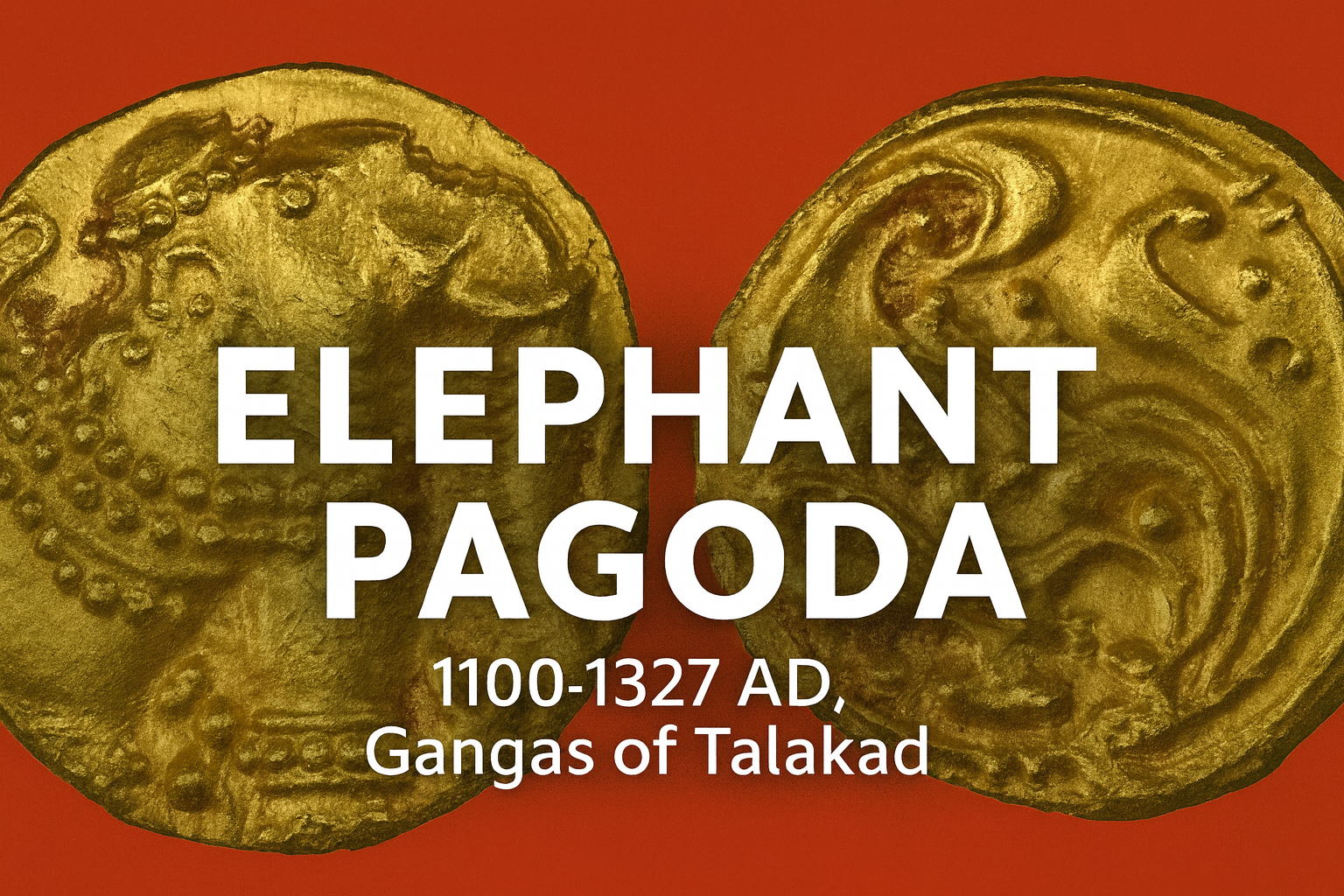The Elephant Gold Pagoda: A Hidden Gem from Medieval India Worth Its Weight in Gold

Introduction: The Rising Demand for Exotic Rare Coins
In the world of rare coin collecting and investment, European pieces from the Roman Empire or the Holy Roman Empire often dominate the spotlight. But beyond the borders of Europe lies a treasure trove of numismatic history that remains largely untapped — South India’s medieval gold coinage.
One such exceptional rarity is the Elephant Right Gold Pagoda, struck between 1100 and 1327 AD by the Gangas of Talakad, a powerful dynasty that ruled over present-day Karnataka in southern India. Recently graded as MS63 by NGC, this coin has started catching serious attention from collectors and investors alike. Here's why this small yet majestic gold piece might be one of the best-kept secrets in the numismatic world.
Section 1: A Masterpiece of Medieval India
The Elephant Pagoda is a small, round gold coin — weighing around 3.8 grams and measuring 14–16mm in diameter — but it holds a giant place in history.
Obverse Design: A richly decorated elephant facing right, adorned with ceremonial ornaments and possibly a parasol (a royal symbol in Indian tradition).
Reverse Design: A floral scroll design with no inscriptions, typical of South Indian artistry from the medieval period.
The coin features no date or ruler’s name, adding to its mystique. Yet its unmistakable imagery — particularly the powerful elephant — symbolized royal authority and spiritual protection throughout the Indian subcontinent.
Unlike many other medieval coins, the Elephant Pagoda remains remarkably well-preserved in this MS63 example, showcasing sharp detail and luster rarely seen in coins of this era.
Section 2: The Forgotten Dynasty Behind the Coin
The Western Ganga Dynasty, known locally as the Gangas of Talakad, ruled from around the 4th to 10th centuries, with influence continuing through allied dynasties like the Hoysala Empire well into the 14th century.
While the dynasty eventually faded into obscurity, its cultural and economic influence persisted. The elephant became the symbol of the dynasty and later of regional power across southern India. These coins likely served in both local religious endowments and international maritime trade, especially across the Indian Ocean — a hub connecting India with Sri Lanka, Southeast Asia, and even Africa.
This specific coin is also linked to the 'Gajapati' tradition — rulers who were “Lords of the Elephants.” Its presence in regions far from Karnataka suggests it was widely trusted and valued as gold-based currency.
Section 3: Why the Elephant Pagoda Matters Today
1. Extreme Rarity and Collector Demand
Despite its humble size, the Elephant Pagoda is incredibly rare, especially in Mint State condition. MS63 examples are seldom seen in auctions. In fact, many existing examples are worn down or corroded due to the coin’s age and environmental exposure.
The most recent NGC MS63 graded example sold for approximately ¥379,121 (~$2,600 USD) — a fair price considering that a MS66 version has fetched over ¥1.8 million (~$12,000 USD) in Japan. As interest in Indian numismatics grows, values for pristine examples are expected to rise.
2. Art + History + Investment Potential
The Elephant Pagoda isn’t just a coin — it’s a portable piece of history. It offers:
A unique design not found in Western coinage.
A historical narrative tied to royalty, religion, and ancient trade.
Tangible value as a gold asset during times of economic uncertainty.
For investors, it's an attractive diversification asset that combines tangible gold value with artistic and historical appeal — all within a scarcity-driven market.
3. Rising Market for Indian Historical Coins
With India’s growing global influence and expanding class of ultra-high-net-worth individuals (UHNWI), demand for high-grade, historically significant Indian coins is surging. This trend mirrors what has already occurred with Chinese and Roman coins. Early investors in this field could see significant appreciation in the coming years.
Conclusion: The Time to Acquire Is Now
The Elephant Right Gold Pagoda represents a rare convergence of beauty, symbolism, historical value, and investment potential. As more collectors seek out exotic and culturally rich alternatives to European coins, masterpieces like this are becoming highly sought after — and increasingly difficult to acquire.
If you’re a serious collector, investor, or connoisseur looking to diversify into museum-grade non-European numismatics, this ancient Indian gold coin is not just a recommendation — it’s a rare opportunity.
Don’t wait until this 'hidden elephant' becomes the next roaring lion of the coin world.
